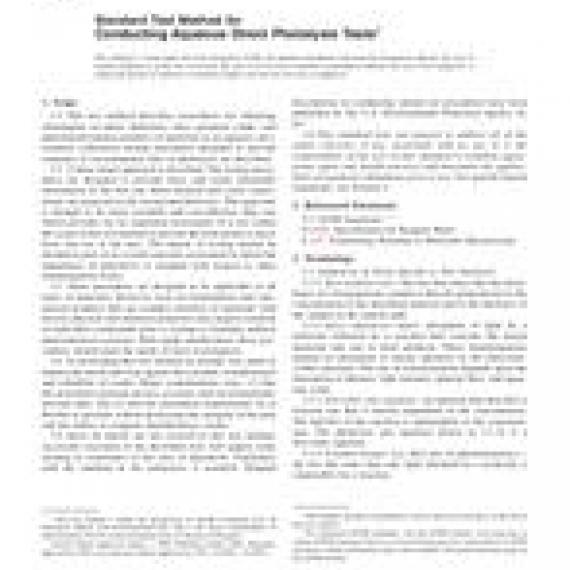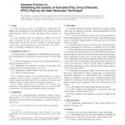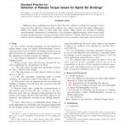No products
ASTM E896-92(2005)
ASTM E896-92(2005) Standard Test Method for Conducting Aqueous Direct Photolysis Tests
standard by ASTM International, 08/01/2005
Full Description
1.1 This test method describes procedures for obtaining information on direct photolysis rates, quantum yields, and phototransformation products of materials in an aqueous environment. Laboratory testing procedures designed to provide estimates of environmental rates of photolysis are described.
1.2 A three-tiered approach is described. The testing procedures are designed to provide basic and easily obtainable information in the first tier. More detailed and costly experiments are proposed in the second and third tiers. This approach is thought to be more scientific and cost-effective than one which provides for no sequential assessment. It is not within the scope of this test method to provide decision points to move from one tier to the next. The degree of testing should be decided as part of an overall exposure assessment in which the importance of photolysis is weighed with respect to other transformation routes.
1.3 These procedures are designed to be applicable to all types of materials. However, tests on formulations and commercial products that are complex mixtures of materials with diverse physical and chemical properties may require isolation of individual compounds prior to testing to eliminate indirect photochemical reactions. With slight modification, these procedures should meet the needs of most investigators.
1.4 In developing this test method an attempt was made to balance the needs and costs against the scientific considerations and reliability of results. Major considerations were: (1) that the procedures generate precise, accurate, and environmentally relevant data, and (2) that the procedural requirements be as flexible as possible without destroying this integrity of the data and the ability to compare interlaboratory results.
1.5 Since all details are not covered in this test method, successful execution of the described tests will require some training or experience in the area of photolysis. Familiarity with the material in the references is essential. Detailed descriptions on conducting similar test procedures have been published by the U.S. Environmental Protection Agency
1.6 This standard does not purport to address all of the safety concerns, if any, associated with its use. It is the responsibility of the user of this standard to establish appropriate safety and health practices and determine the applicability of regulatory limitations prior to use.


































